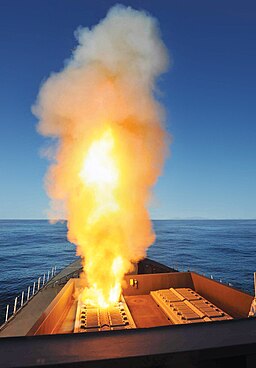The British Royal Navy’s Sea Viper air defense system is set for a significant upgrade, marking a major step forward in both national security and for the European defense industry. The $514 million project, announced in a joint statement by the UK government and MBDA, the prime contractor, promises to strengthen the UK’s maritime defenses against evolving threats while also providing a lucrative boost for the company.

Photo: LA(Phot) Ben Sutton/MOD, OGL v1.0OGL v1.0, via Wikimedia Commons
At the heart of the upgrade lies the need to counter the growing threat of anti-ship ballistic missiles (ASBMs). The existing Sea Viper system, already capable of engaging a variety of air threats, will be enhanced with upgraded warheads and software for its Aster 30 missiles, enabling them to tackle these emerging dangers. This enhanced capability will be crucial in protecting the UK’s Carrier Strike Group and vital shipping lanes from potential adversaries.
The government’s perspective is clear. Defense Secretary Grant Shapps emphasized the need to adapt to a “worsening situation in the Middle East” and safeguard British interests. This upgrade is seen as a vital investment in national security, ensuring the Royal Navy remains equipped to face contemporary threats.
For MBDA, the project represents a significant commercial opportunity. As the prime contractor, the company will be responsible for overseeing the entire upgrade process, from design to implementation. This project reinforces their position as a leading player in the European defense industry, showcasing their expertise in missile technology and securing hundreds of highly skilled jobs across the UK.
The project also highlights the importance of international cooperation in defense. MBDA is a joint venture between companies from France, Italy, and the UK, and the Sea Viper upgrade involves teams from all three countries. This collaboration not only facilitates technology transfer and cost-sharing but also strengthens military ties and interoperability between partner nations.
The upgrade is planned to be completed by 2032, but it’s just the first step in a continuous improvement process. The second phase will assess the integration of the even more advanced Aster 30 Block 1NT missile, ensuring the Sea Viper system remains at the forefront of air defense technology for years to come.
For more information, hit the Source below